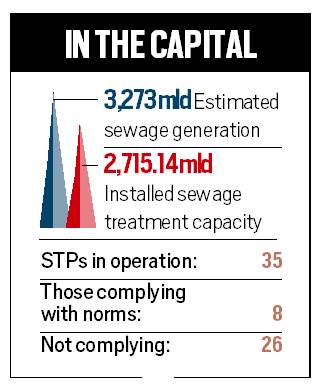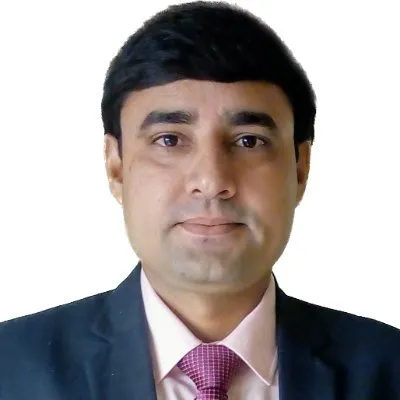Cleaning Yamuna remains on paper as ‘26 of 35 STPs fail to meet norms’
Non-compliance of STPs in Delhi is significant as the Yamuna stretch from Wazirabad to Okhla is the most polluted.
 Proceedings of the Yamuna Monitoring Committee (YMC) concluded on Wednesday, close to two-and-a-half years after it was set up by the National Green Tribunal (NGT). (Express File Photo: Gajendra Yadav)
Proceedings of the Yamuna Monitoring Committee (YMC) concluded on Wednesday, close to two-and-a-half years after it was set up by the National Green Tribunal (NGT). (Express File Photo: Gajendra Yadav)Efforts to clean the Yamuna largely remain on paper as 26 out of 35 sewage treatment plants (STPs) in Delhi, having a combined treatment capacity of 2,258.72 million litres per day (MLD), are not complying with discharge norms prescribed by the pollution control body.
This has been revealed in a monthly progress report for September 2020, prepared by the Delhi Pollution Control Committee (DPCC), which is responsible for framing pollution control norms in Delhi. The report was sent to the Secretary of Union Ministry of Jal Shakti recently.
The report shows only eight STPs, with a combined treatment capacity of 433.69 MLD, are complying with norms. The status of one STP is not known as samples were not collected.
Non-compliance of STPs in Delhi is significant as the Yamuna stretch from Wazirabad to Okhla is the most polluted.

The DPCC had prescribed eight types of standards for treated effluent of STPs (old and new) in Delhi. It had communicated the same to the Delhi Jal Board (DJB), responsible for operations and maintenance of STPs, on January 31. Compliance status of the STPs was checked by the pollution body in September.
According to the report, against the estimated 3,273 MLD (720 million gallons per day) sewage generation in Delhi, installed sewage treatment capacity is just about 2,715.14 MLD (597.26 MGD). However, on ground, the actual use of sewage treatment capacity is even lower as capacity utilisation of existing STPs is about 90% (2,432 MLD) of installed capacity.
The issue of sewage treatment plants not complying with discharge norms also came up during the 7th meeting of the Central Monitoring Committee, which met under the chairmanship of Union Jal Shakti Secretary UP Singh on November 9.
Minutes of the meeting, circulated on November 17, show that the Executive Director (Technology), National Mission for Clean Ganga, raised the issue of non-compliance of STPs. The meeting was also attended by Additional Chief Secretary (Urban Development), Delhi government, and other state government officials, who admitted that some STPs are not meeting the “stringent norms”.
“CEO, Delhi Jal Board, informed that 70 MGD of treated water from STPs are achieving discharge norms of BOD-10mg/l, TSS-10 mg/l and COD-50mg/l and remaining operational STPs which are old, and have been designed for old discharge norms, may not be able to achieve the stringent norms,” state the minutes.
It added: “Of the 13 Common Effluent Treatment Plants operational in Delhi, only three are complying with norms… Compliance of existing STPs and CETPs and slow progress of ongoing STP projects remains a major issue.” CETPs have been established for controlling industrial pollution in the river.
When contacted, a senior DJB official said, “All STPs will comply with the advanced (discharge) standards within three years. A new approach is being tried to upgrade STPs at low cost.”













